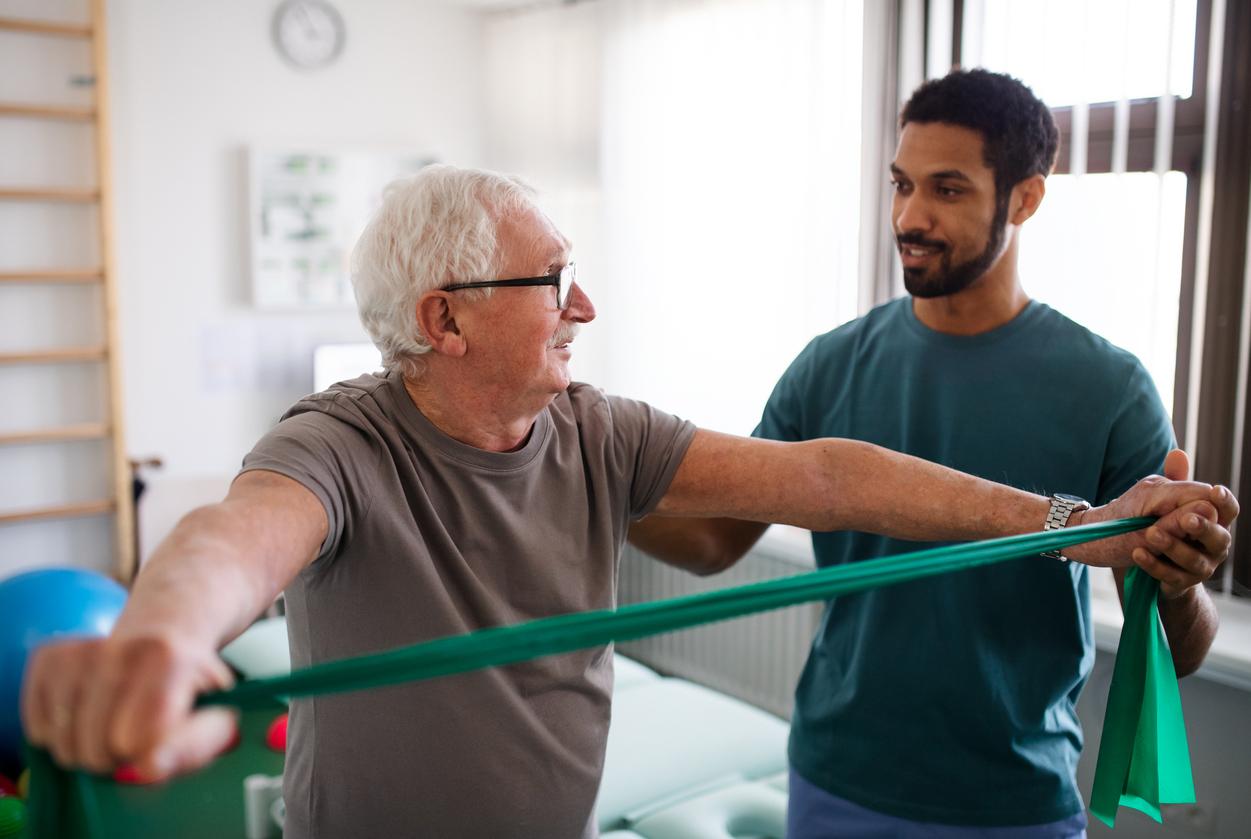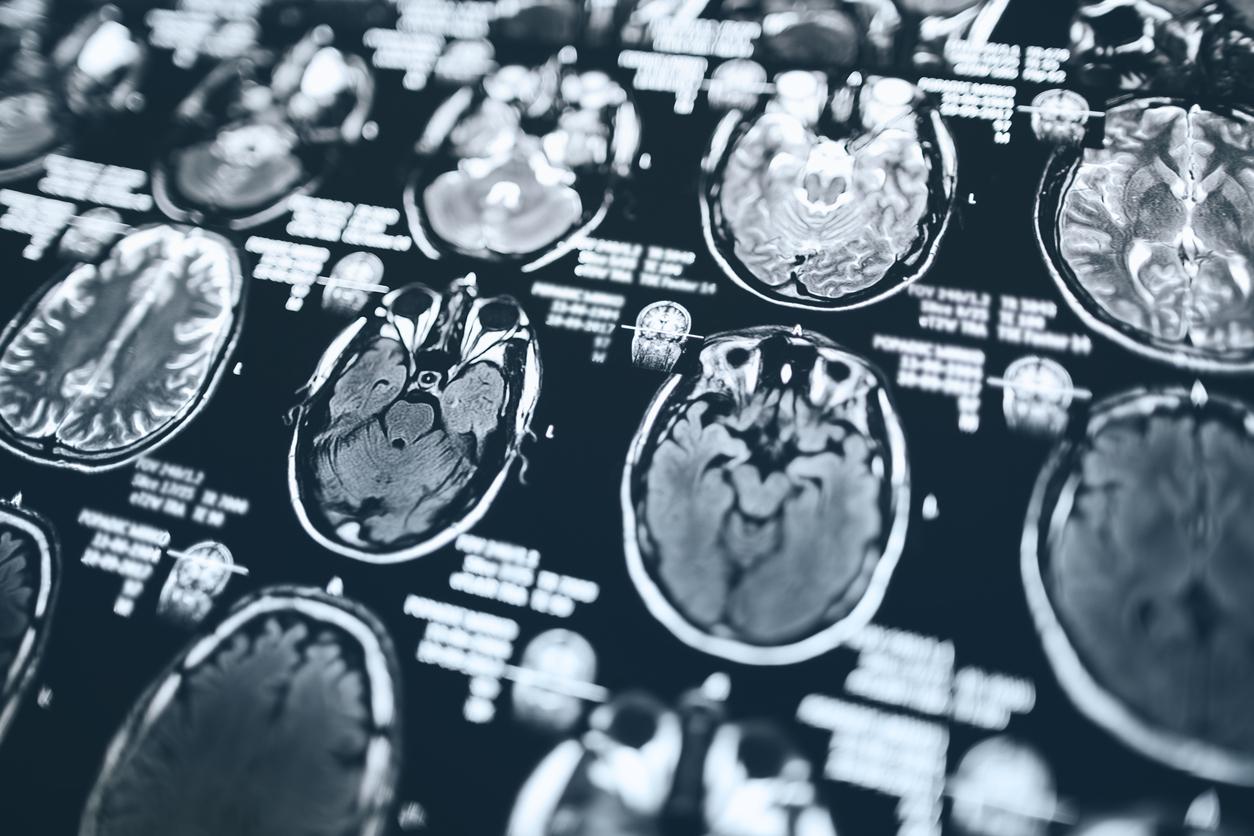Adapted physical activity (APA) has a positive impact on health.

- Adapted physical activity (APA) corresponds to physical activities adapted to the pathologies and physical capacities of sick people.
- APA is carried out using a medical prescription from a general practitioner or specialist. It can be renewed by a doctor or physiotherapist if the doctor agrees.
- APA can be covered in full or in part by certain local authorities or supplementary health insurance.
Since the beginning of the 2000s, physical activity has been an important element of national health nutrition program (PNNS). The objective is to improve the health of the entire population. But how can we adapt sport to the person and their state of health? The solution: adapted physical activity (APA), which corresponds to physical activities adapted to the pathologies and physical capacities of sick people.
Physical activities on prescription
Inactivity and a sedentary lifestyle are risk factors for many conditions such as obesity, diabetes, depression, cancer, cardiovascular diseases, etc. Physical activity is considered a therapeutic complement for many diseases including those called neurodegenerative (Multiple Sclerosis for example). Furthermore, it is a fundamental element of “aging well”.
These adapted physical activities are prescribed by prescription, due to a disability, loss of autonomy or certain pathologies. The goal: to reduce disease risk factors and their progression.
Initially reserved for people benefiting from a ALD (Long-Term Affection), this possibility is now extended to people with a chronic illness and certain risk factors such as high blood pressure, a sedentary lifestyle, undernutrition, overweight, obesity, etc. Likewise, people in a situation of loss of autonomy, namely the beneficiaries of a right allocated by the CDAPH (Commission for the Rights and Autonomy of People with Disabilities, attached to the MDPH -Departmental House for Disabled Persons-), holders of the mobility inclusion card, beneficiaries of the personalized autonomy allowance, home help, or people who have benefited from a “ multidimensional screening for age-related functional decline » revealing a certain fragility.
Recognized benefits of ordinary and adapted physical activity
This prescription sport has many benefits for physical, mental, social and health well-being. Indeed, it allows the maintenance or improvement of motor, cognitive functions, respiratory and cardiovascular capacities. It constitutes a tool in the fight against many chronic diseases such as diabetes, cancers, cardiovascular or neurological diseases, osteoporosis, depression, etc. Sport also constitutes a way of establishing social connections, meeting new people and thus to fight against isolation.
Physical activity has many other positive effects: it improves sleep, provides pleasure, strengthens self-esteem and reduces stress, anxiety and anxiety.
It has in fact a positive impact on the symptoms of many pathologies, such as for example, anorexia nervosa, as was mentioned by Dr Coline Stordeur, child psychiatrist at the Early Onset Anorexia Nervosa Reference Center for Rare Diseases (APHP, Paris). ) during the “Endocrinolympiads” organized by the French Society of Endocrinology (SFE) on April 5, knowing that it becomes harmful in the event of a so-called problematic practice, that is to say unsuitable or in excess.
Physical activity also prevents falls in the elderly.
A renewable prescription adapted to health
The prescription for adapted physical activity, for a renewable period of 3 or 6 months, must be carried out by a general practitioner or specialist on a specific form which specifies the objectives linked to the practice of adapted physical activity (weight control, improvement of muscular strength, etc.), the precautions to take (when to slow down, when to stop, etc.) and possible contraindications. This prescription will therefore be adapted to the person’s state of health.
The 1time prescription entitles you to an assessment of physical condition and functional capacities, as well as a motivational assessment which will be carried out by a person qualified in adapted physical activity. This will then define a program adapted to the specific needs of the person, the type of activity and its characteristics (duration, frequency, intensity). The HAS (High Authority of Health) issued, in 2022, best practice recommendations.
Not necessarily health professionals
APA professionals are: either a health professional (massager-physiotherapist, occupational therapist or psychomotor therapist), or an APA-S teacher (holder of at least a license mentioning STAPS “adapted physical activity and health”), an educator sportsman trained in health sports or a qualified person holding a certification issued by an approved sports federation, who are therefore not health professionals.
If the APA sports coach comes to the beneficiary’s home, it is possible to benefit from a 50% tax credit since this profession is one of the listed personal services.
If the instructor is a masseur-physiotherapist, he can, unless otherwise advised by the prescribing doctor, renew the initial prescription at the end of the duration or number of sessions prescribed, or even adapt the type of activity, its intensity, frequency and duration depending on needs.
Otherwise, it is the original doctor or another who carries out the renewal.
A multitude of sports offered
The types of sports prescribed are very varied. This can be: walking with or without a pole, running, swimming, cycling, muscle strengthening activities, flexibility or joint mobility exercises, cardio or endurance exercises, yoga, pilates, dancing, etc.
At the end of the APA sessions, the practice can be continued by the person independently or with a sports instructor in order to follow an “ordinary” physical activity.
A possible refund
Unfortunately, even if adapted sport is a prescription, coverage by Health Insurance (reimbursement) is not possible. You will generally have to pay the costs incurred by the APA. However, it is possible to benefit from a partial or total support :
- by certain local authorities, departmental councils or municipalities, which offer aid with the support of regional health agencies (ARS), advice. To find out, you must contact the Communal Social Action Center (CCAS) in your place of residence;
- by your complementary health insurance: upon presentation of a prescription, certain mutual insurance companies reimburse the practice of an APA.
Let us therefore not lose sight of the fact that practicing physical activity is essential for health, whether we are in good health or already suffering from an illness.
















